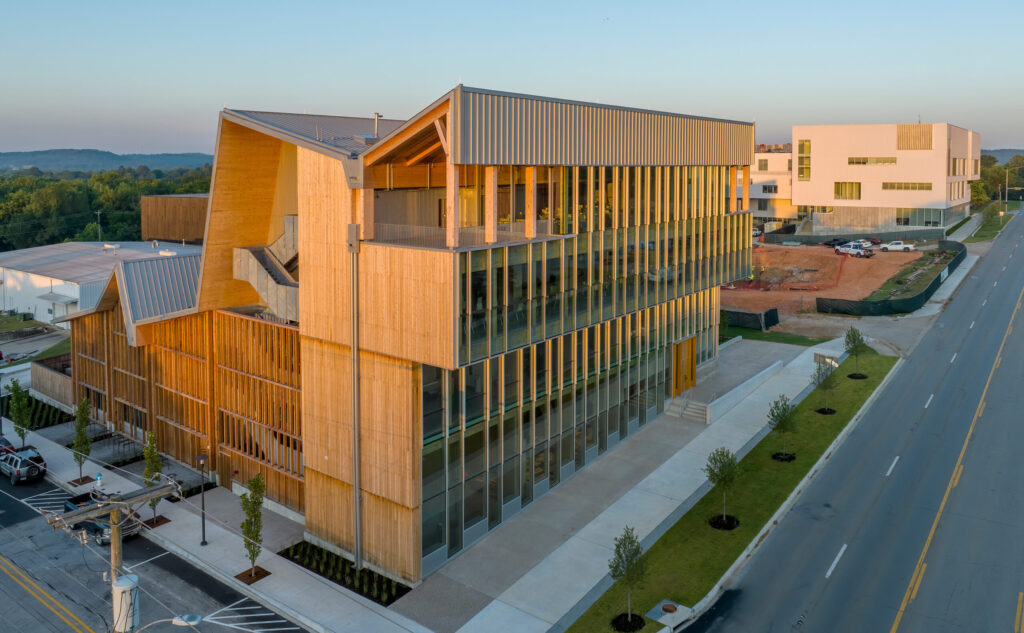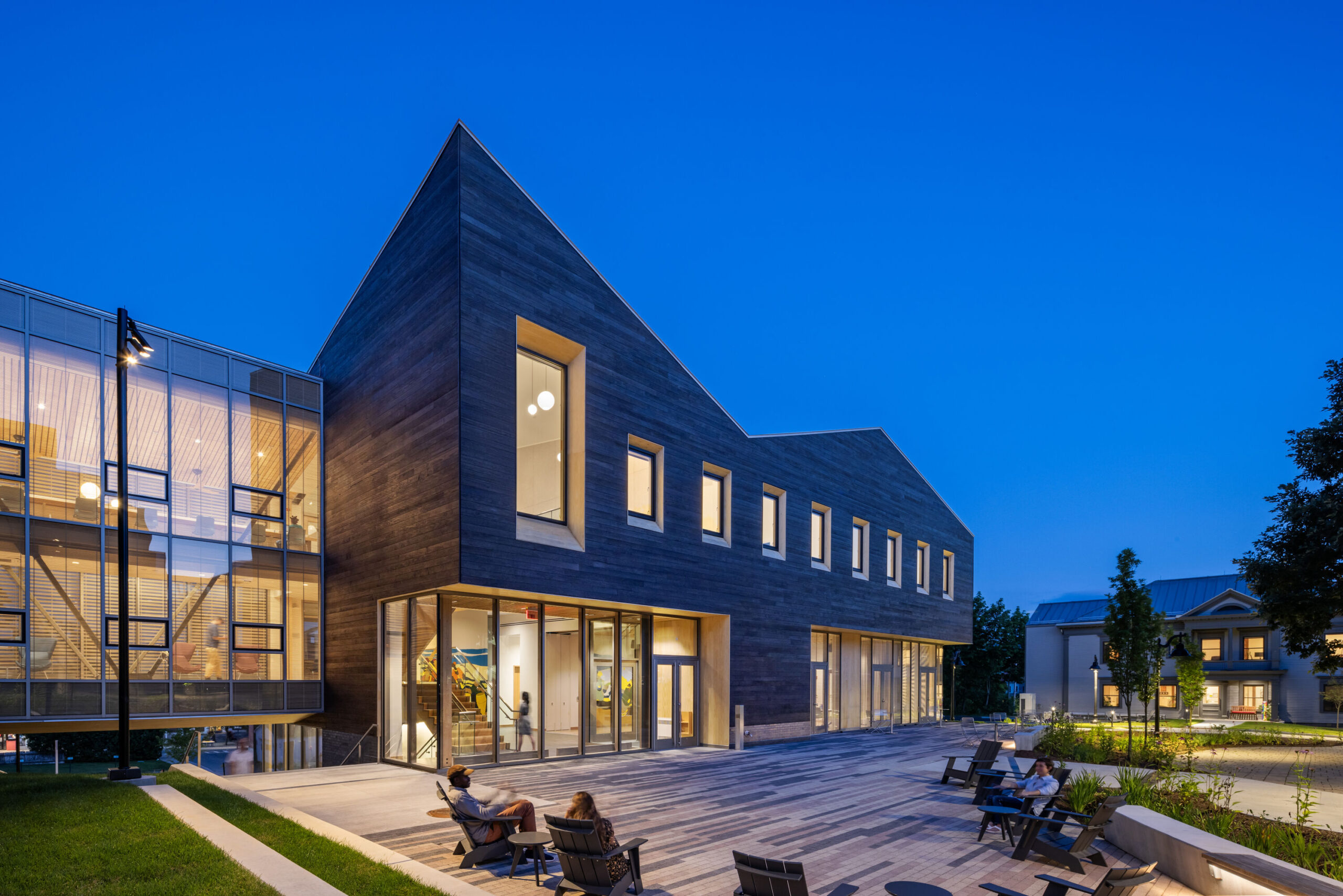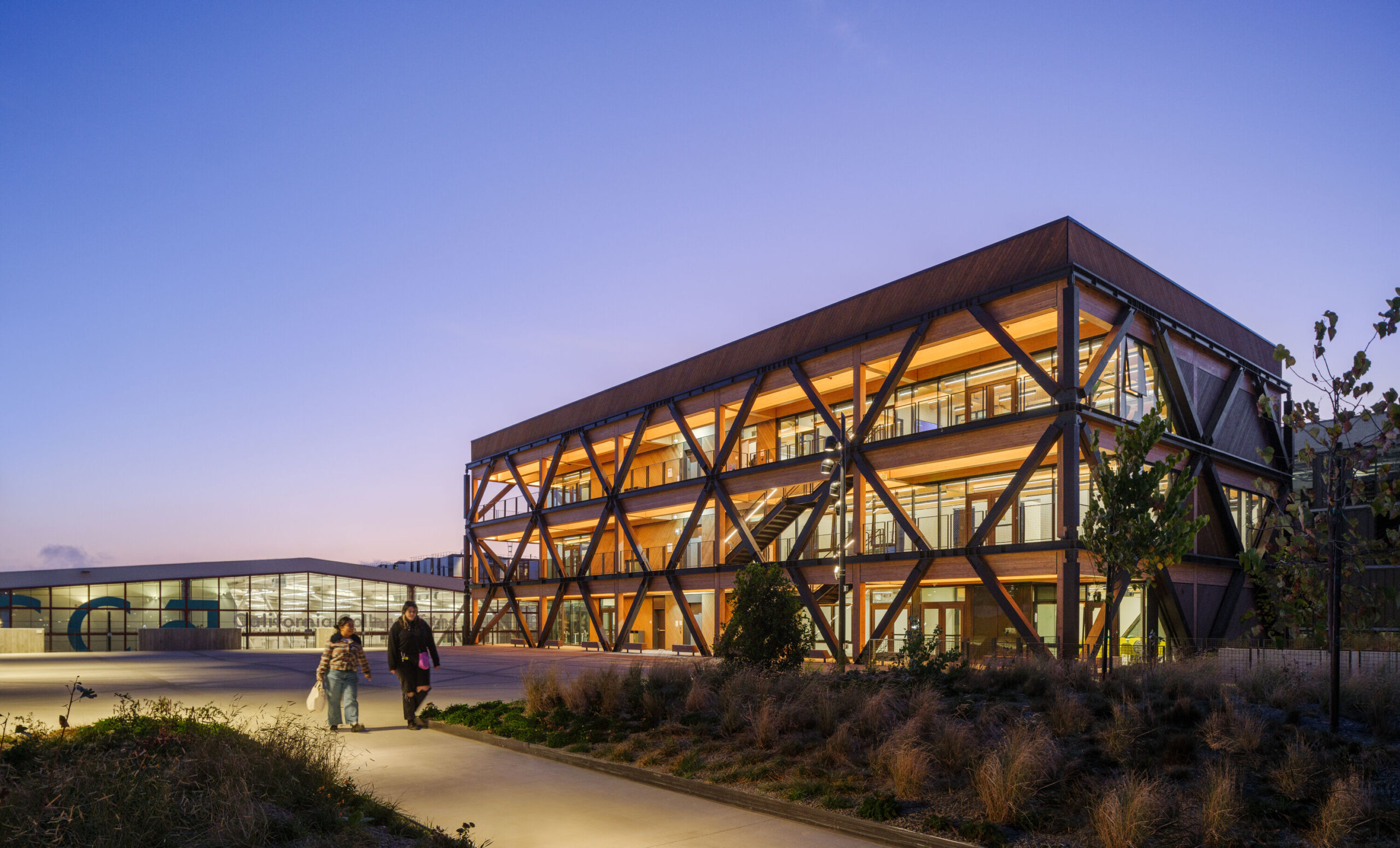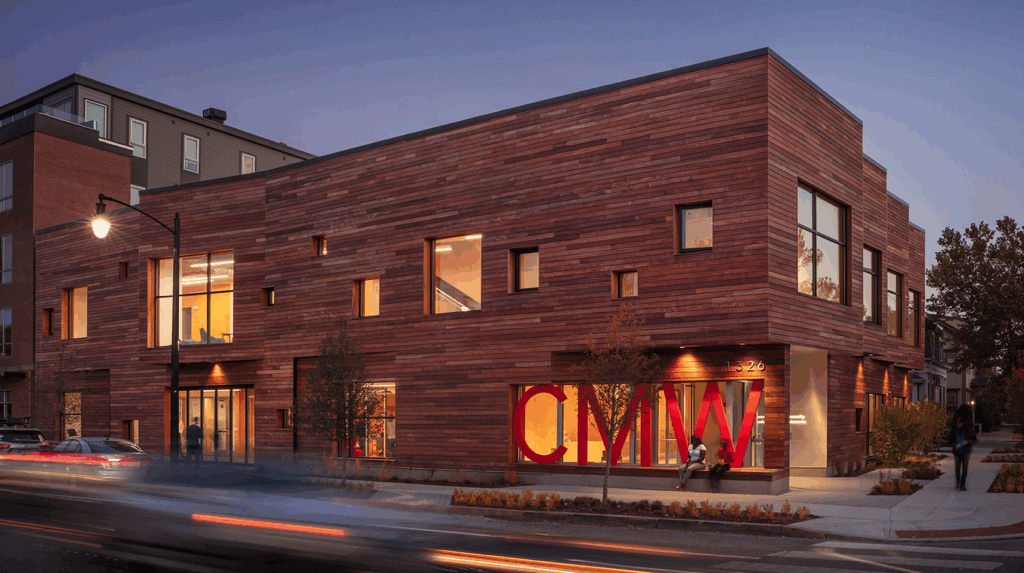Education, Mass Timber
Jacobson Hall Student Housing at Trinity Western University
Prefab Wood Construction Makes the Grade for Post-Secondary Student Housing
With thousands of names on waiting lists for student housing at British Columbia universities and rising demand in an already crowded and expensive rental market, Trinity Western University (TWU) looked to innovative prefabricated wood construction to build a student housing project to house 220 students.

Enrollment has been steadily growing at Trinity Western University (TWU), a private Christian liberal arts university in Langley immediately east of Vancouver, British Columbia, but they only had on-campus housing available for less than 25 percent of their 4,000 students.
This 5-story prefabricated wood-frame and mass-timber student housing project brought several advantages to the TWU campus, including a faster schedule, more predictable construction costs, improved quality control, reduced site impact and greater construction efficiency. Services such as sprinkler systems and plumbing were pre-installed, as well as all fixtures, electrical and flooring. When the modules were lifted into place, the units contained beds, desks and even the mattresses. This was the first five-story modular project built in Canada, and wood easily met the higher seismic, wind, and structural performance requirements.

Wood Use
The structure was framed completely with wood, and contained 90 modules. Cross-laminated timber (CLT) was used to frame the elevator shaft; modules then connected to either side of the CLT structure. They chose 2×12 floor joists, spaced 16-inches on centre, for the floors of the bottom modules to accommodate thicker insulation against the slab. Floors on the upper modules used 2×10 dimension lumber, some were doubled for loading. The roof structures of the lower modules were framed using 2×6 dimension lumber while modules on the fifth story used 2×12 roof joists to allow for more insulation and to accommodate the tapered roof, slanted for drainage. Wall framing also varied by floor, from 2x4s to double 2x6s, since they needed more structural capacity on the lower levels. Glued-laminated timber (glulam) beams frame openings and common areas in each of the suites, and floors were covered in both plywood sheathing and underlayment to accommodate any type of finish.
Environmental Impact
From material waste savings and more durable construction to reduced transportation impacts during construction, prefabricated wood-frame construction can offer many environmental benefits. Modular wood-frame is built to last, and must be built strong enough to withstand the stresses of transport by truck and placement on a foundation by a crane. Another benefit is improved energy efficiency, since both the space between the modules as well as the walls, floors and ceilings of the modules themselves are insulated, while assembly offsite and indoors allows for a tighter more efficient assembly and fit.
Project Details
- Architect
- BR2 Engineering
- Size
- 55,380 square feet
- Contractor
- Metric Modular
- Date Completed
- 2018
- Glulam Fabricator
- Structurlam Products Ltd.
- Owner
- Trinity Western University
- Structural Engineer
- Canstruct Engineering









